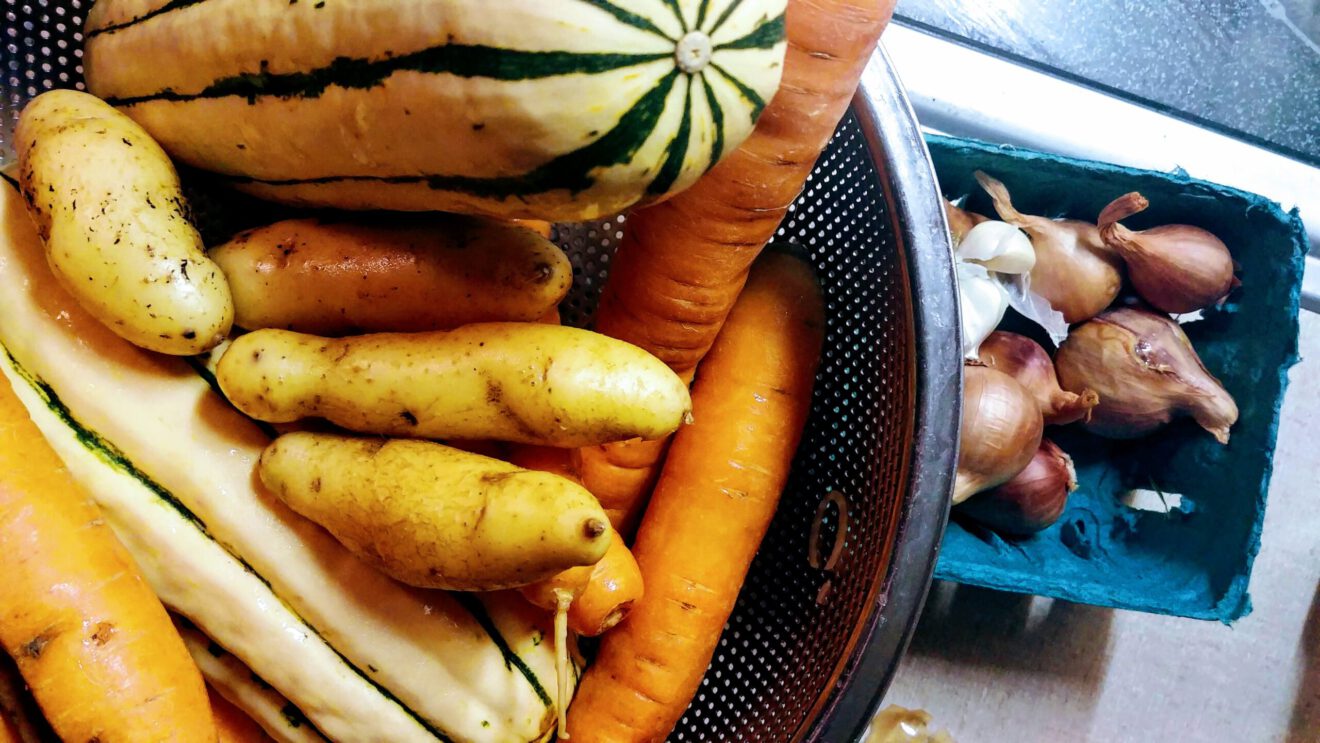Not too many years ago, grocery shoppers would never see the misshapen carrots, blemished apples and oddly bent potatoes that grow naturally alongside their more perfect peers.
But growing awareness in recent years of the dual problems of food waste and food deserts has pointed some in the same direction. Ugly produce, the term coined to mean any fresh fruits and vegetables that don’t live up to the strict appearance standards supermarkets and consumers have come to expect, is going mainstream.
The world throws out about 1.3 billion pounds of uneaten food annually, according to a United Nations Food and Agriculture Organization report, and more than $160 billion worth of food goes to waste in the US each year, the Agriculture Department says. At the same time, about 15 million US households experienced food insecurity at some point in 2017.
In the US and other developed countries, much of the waste happens when consumers buy too much and let it go bad or don’t clean their plates in restaurants. But a significant amount of waste, about 44%, happens at the agricultural and post-harvest level, the UN data show.
The problem – produce that’s not pretty enough to be sold to supermarkets, restaurants and foodservice outlets never makes it out of the fields. The growing solution – ugly produce services that find a home for the fruits and vegetables that are misshapen and gnarly but still tasty and nutritious, while offering consumers greater access to affordable, healthy food.
In fact, says Misfits Market founder and CEO Abhi Ramesh, ugly produce sold by his company and other startups may be even fresher and more flavorful than the fruits and veggies they find in the supermarket, because the food is typically shipped to customers only a few days after being harvested.
Philadelphia-based Misfits Market launched last summer, after spending considerable time making connections with farmers and a few distributors looking to find a market for their less-than-perfect produce, Ramesh said. The startup is one of a growing wave of similar companies such as Imperfect Produce and Hungry Harvest.
Others, like Full Harvest, operate on business-to-business models. The company provides an online platform where farmers with ugly produce to sell connect with national food and beverage makers looking for more affordable sources of fresh ingredients.
In addition to cutting food waste and providing a less-expensive source of fresh produce, Full Harvest is also providing a new revenue source to small and family-owned farms coping with rising costs for labor and inputs, said Full Harvest founder and CEO Christine Moseley.
The company has facilitated sales of more than 7 million pounds of produce since its 2016 launch, and in August it raised $8.5 million in a new funding round.
Foodservice and direct-to-consumer sales aren’t the only business models for the ugly produce industry.
Restaurants are also finding ways to use less-than-perfect produce in recipes and chefs like Blue Hill Farms’ Dan Barber have become high-profile advocates for cutting food waste by using more of the plant.
Supermarkets in the US and Europe, including Kroger, Whole Foods Market and Tesco, have experimented with selling ugly fruits and vegetables at discounted prices, with mixed results.
“I think it would be difficult for grocery stores to make this a large part of what they do,” Ramesh said.
Retailers have limited shelf space and their supply chains are largely set up with a focus on perfect produce delivered by big suppliers, he said.
That said, when they embark on ugly produce programs, supermarkets are helping get consumers accustomed to seeing and trying less-than-perfect fruits and vegetables.
“I think it’s amazing that they’re experimenting with it, but my hunch is that the ugly food sections will remain small,” Ramesh said.
Misfits Market operates on a subscription model, delivering boxes of imperfect fruits and vegetables either every week or every two weeks. Customers sign up online and they can register allergies and preferences, but the contents of the boxes is largely determined by what’s available and seasonal.
The convenience of having the produce delivered each week is a selling point for some customers, in addition to the cost savings. Misfit Market’s customers pay $19 for a small box of organic produce or $38 for a large box, significantly less than they would pay for comparable amounts of organic produce in the grocery store, he said.
The term “ugly produce” was coined to cover all the fresh fruits and vegetables not pretty enough for the grocery store, but the category also includes excess produce from particularly bountiful harvests, Ramesh said.
When farmers grow more than distributors want to buy, they need to find new markets for that excess, and ugly produce startups are often the solution, he said.
“I think the psychological factors about ugly produce are going away slowly as people come to understand the fact that because it’s twisted in a certain way, that doesn’t affect the nutritional value or the taste.”
____________________________________________
If you enjoyed this article, sign up for Restaurant Smartbrief to get news like this in your inbox, or check out all of SmartBrief’s food and travel newsletters as we offer more than 30 newsletters covering the food and travel industries from restaurants, food retail and food manufacturing to business travel, the airline and hotel industries and gaming.
